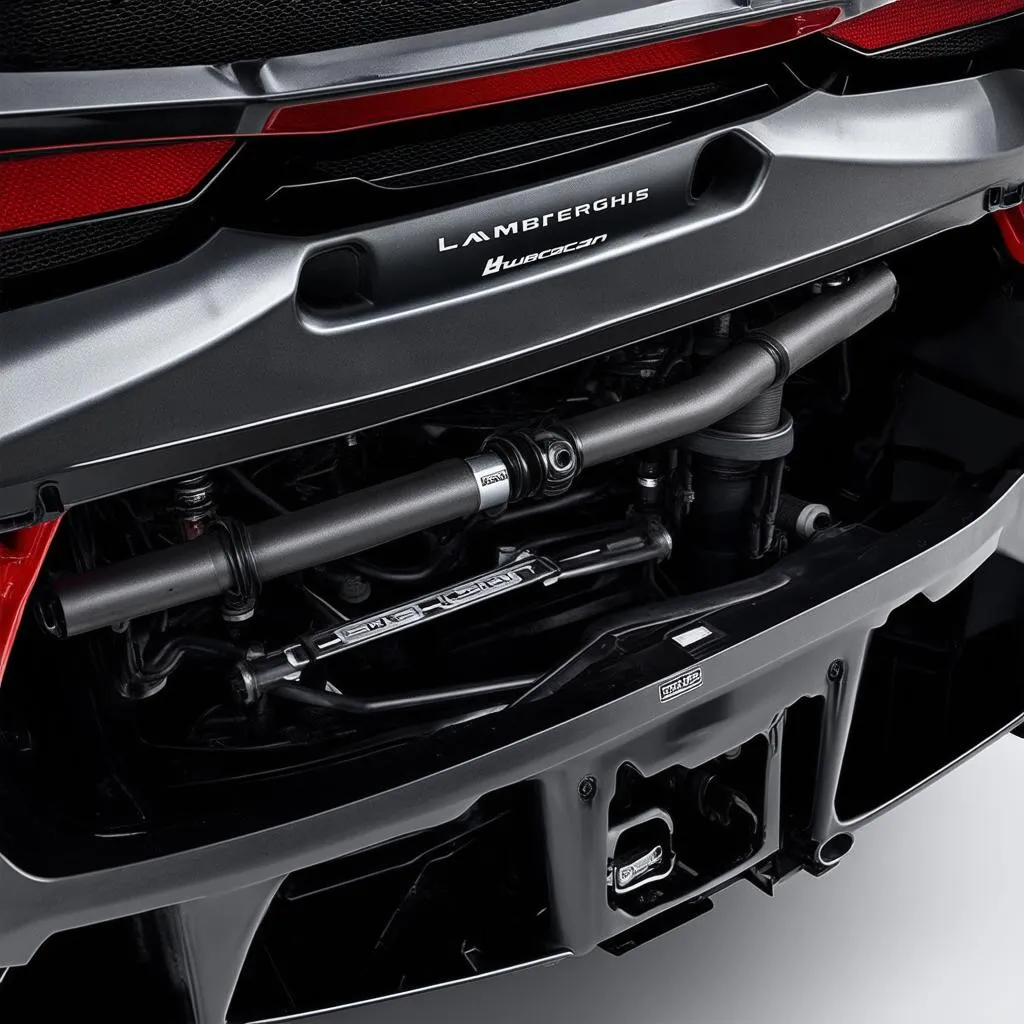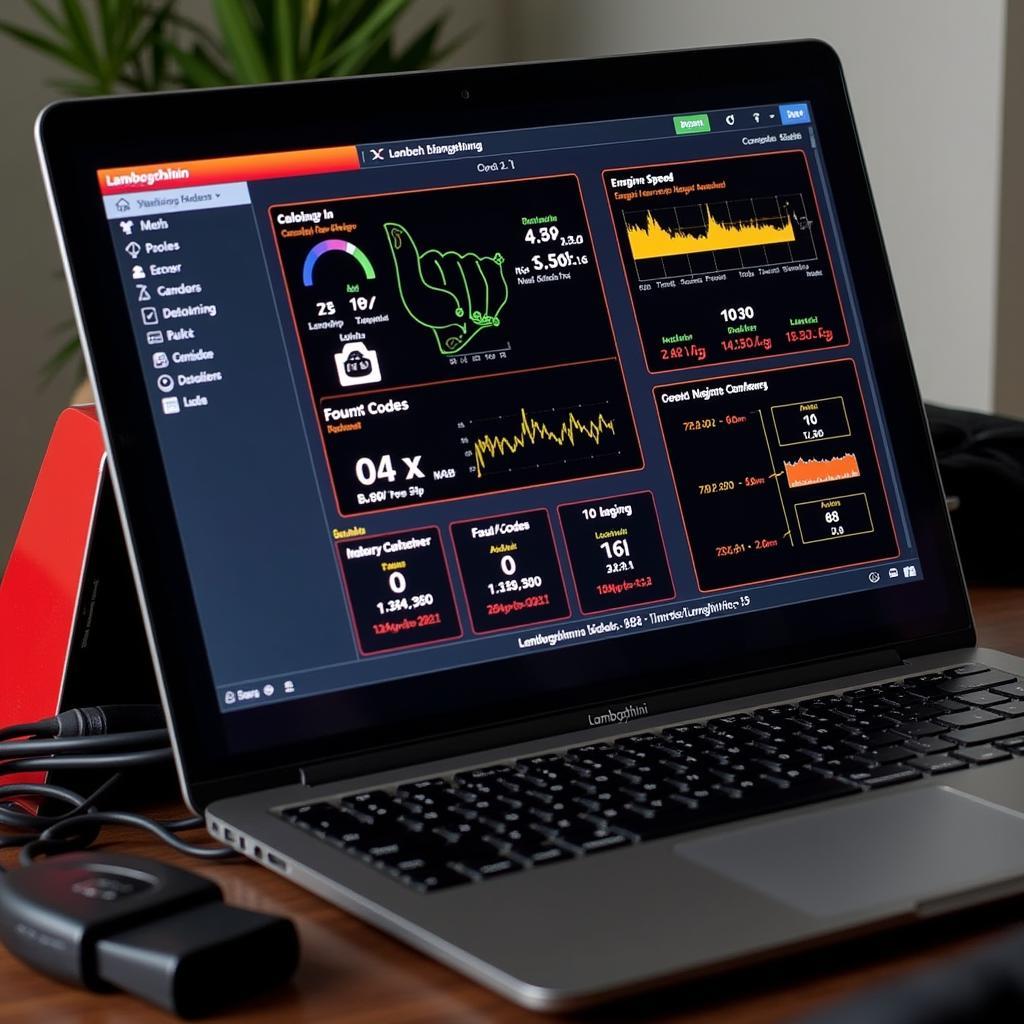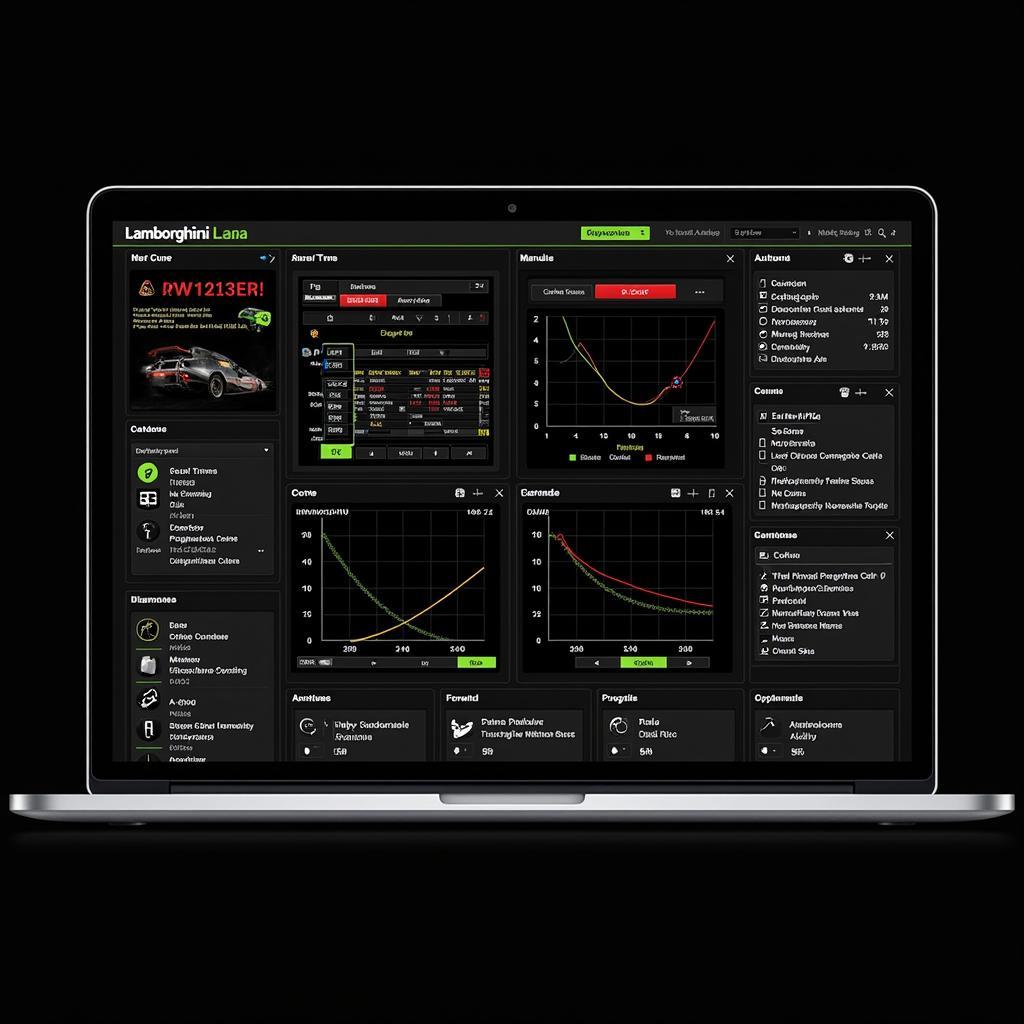The Lamborghini Huracan is a marvel of modern automotive engineering, renowned for its blistering performance and razor-sharp handling. At the heart of this exhilarating driving experience lies a sophisticated suspension system, with the rear suspension playing a pivotal role in maintaining stability and control at the limits. A “Lamborghini Huracan rear suspension scan” is a critical process that allows technicians to delve into the intricate workings of this system, diagnose potential issues, and ensure optimal performance.
Understanding the Importance of a Rear Suspension Scan
A rear suspension scan goes beyond a simple visual inspection. It utilizes advanced diagnostic tools to communicate with the Huracan’s onboard computer, accessing a treasure trove of data about the rear suspension’s performance. This data can reveal issues that might otherwise go unnoticed, such as:
- Sensor Malfunctions: The Huracan’s rear suspension relies on various sensors to monitor wheel speed, ride height, and other critical parameters. A scan can detect faulty sensors that might be sending inaccurate data, leading to performance issues.
- Calibration Errors: Over time, the Huracan’s suspension settings can drift from their factory calibrations due to wear and tear or modifications. A scan allows technicians to identify these discrepancies and recalibrate the system for optimal performance.
- Component Wear: The rear suspension comprises numerous components, including bushings, control arms, and bearings. A scan can reveal signs of wear and tear, allowing for timely replacements before they escalate into major problems.
What to Expect During a Lamborghini Huracan Rear Suspension Scan
The process typically involves connecting a specialized diagnostic tool to the Huracan’s OBD-II port. This tool communicates with the car’s computer, extracting data from the rear suspension system. Technicians, well-versed in Lamborghini’s specific diagnostic procedures, analyze this data to identify any anomalies.
“When dealing with a performance machine like the Huracan, precision is key,” states Alessandro Rossi, a seasoned automotive engineer specializing in high-performance vehicles. “A rear suspension scan provides the granular data needed to diagnose issues accurately and make informed repair or adjustment decisions.”
 Lamborghini Huracan rear suspension components
Lamborghini Huracan rear suspension components
Common Issues Identified Through a Rear Suspension Scan
Several issues specific to the Lamborghini Huracan’s rear suspension can be readily diagnosed through a scan:
- Magnetic Ride Control Faults: The Huracan employs a sophisticated magnetorheological fluid-based suspension system (optional on some trims). A scan can pinpoint problems with this system, such as faulty sensors or issues with the fluid itself.
- Rear-Wheel Steering Alignment: Some Huracan models feature rear-wheel steering for enhanced agility. A scan can detect misalignment in this system, leading to compromised handling.
- Electronic Damper Control Malfunctions: The Huracan’s electronically controlled dampers provide a variable ride experience. A scan can identify faulty dampers or issues with the electronic control unit.
The Benefits of Regular Rear Suspension Scans
Regular rear suspension scans are not just for troubleshooting problems; they are an integral part of preventative maintenance for your Lamborghini Huracan. By identifying issues early on, you can:
- Prevent Costly Repairs: Addressing minor problems before they escalate can save you significant expenses on major repairs down the line.
- Maintain Optimal Performance: A properly calibrated and maintained rear suspension ensures your Huracan performs at its best, delivering the exhilarating driving experience it’s known for.
- Enhance Safety: A well-functioning suspension is crucial for safety, especially at high speeds or during aggressive maneuvers.
 Lamborghini Huracan on a lift for suspension inspection
Lamborghini Huracan on a lift for suspension inspection
Frequently Asked Questions about Lamborghini Huracan Rear Suspension Scans:
Q: How often should I get a rear suspension scan on my Huracan?
A: It’s generally recommended to have a rear suspension scan performed annually or every 10,000 miles, whichever comes first.
Q: Can I perform a rear suspension scan myself?
A: While some DIY diagnostic tools are available, working on a Lamborghini Huracan’s complex systems is best left to trained professionals with experience in these vehicles.
Q: Where can I get a reliable Lamborghini Huracan rear suspension scan?
A: You can find qualified Lamborghini dealerships or specialized automotive workshops equipped to handle these scans. Consider contacting Cardiagtech for recommendations on reputable service providers.
In Conclusion
A Lamborghini Huracan rear suspension scan is an invaluable tool for maintaining the performance, safety, and longevity of your vehicle. From diagnosing hidden issues to ensuring optimal calibration, this process provides valuable insights into the health of your Huracan’s rear suspension.
Contact CARDIAGTECH today to learn more about diagnostic solutions and find trusted providers for your Lamborghini Huracan.


